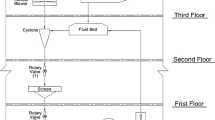Abstract
The air pressure system (APS) is an integral component of Scania trucks and other heavy machinery. Because the brakes on these vehicles use air pressure, keeping the APS in good working order is crucial. Automakers can save money on repairs and boost vehicle efficiency with predictive maintenance. This can be done manually or using an automated system. Predictive maintenance that is performed manually requires human interaction and, as a result, introduces room for error. When humans are involved, there is always a chance that something may be missed or misunderstood, which might compromise the reliability of the maintenance procedures. Several benefits may be gained by employing automatic predictive maintenance strategies, such as artificial intelligence (AI), to investigate the underlying reasons for failure in the APS of Scania trucks. The company relies heavily on the dataset since it pinpoints the faulty parts. Predicting the root cause of failure is made more difficult if the dataset has missing values and unbalanced class issues. To overcome these issues, the data are preprocessed by many resampling techniques such as under-sampling, over-sampling, and the synthetic minority over-sampling technique (SMOTE), and imputation techniques such as KNNImputer and SimpleImputer for mean, mode, and constant strategies, multivariate imputation by chained equations (MICE), and principal component analysis (PCA), to balance the entire data set. After preprocessing, implementation of eight different machine learning algorithms, namely random forest, decision tree, gradient boosting, logistic regression, k-nearest neighbors classifier, AdaBoost classifier, CatBoost classifier, and XGB classifier, is carried out, and then the cost, accuracy metrics, and confusion matrices are analyzed. The results from the experimental analysis show that the XGB classifier is the best model, with accuracy of 99.6241% along with cost-effectiveness.

















Similar content being viewed by others
References
I.T. Franco and R.M. de Figueiredo, Predictive maintenance: an embedded system approach. J. Control Autom. Electr. Syst. 34(1), 60–72 (2023).
S. Rafsunjani, R.S. Safa, A. Al Imran, M.S. Rahim, and D. Nandi, An empirical comparison of missing value imputation techniques on APS failure prediction. Int. J. Inf. Technol. Comput. Sci. 2, 21–29 (2019).
M. M. Akarte and N. Hemachandra, Predictive maintenance of air pressure system using boosting trees: a machine learning approach, in ORSI, 2018.
K. T. Selvi, N. Praveena, K. Pratheksha, S. Ragunanthan, and R. Thamil- selvan, Air pressure system failure prediction and classification in scania trucks using machine learning, in 2022 Second International Conference on Artificial Intelligence and Smart Energy (ICAIS). IEEE, 2022, pp. 220–227.
H. Nguyen and X.-N. Bui, Predicting blast-induced air overpressure: a robust artificial intelligence system based on artificial neural networks and random forest. Nat. Resour. Res. 28(3), 893–907 (2019).
Y. Lokesh, K. S. S. Nikhil, E. V. Kumar, and B. G. K. Mohan, Truck APS failure detection using machine learning, in 2020 4th International Conference on Intelligent Computing and Control Systems (ICICCS). IEEE, 2020, pp. 307–310.
X. Deng, W. Zhong, J. Ren, D. Zeng, and H. Zhang, An imbalanced data classification method based on automatic clustering under-sampling, in 2016 IEEE 35th international performance computing and communications conference (IPCCC). IEEE, 2016, pp. 1–8.
G. D. Ranasinghe and A. K. Parlikad, Generating real-valued failure data for prognostics under the conditions of limited data availability, in 2019 IEEE International Conference on Prognostics and Health Management (ICPHM). IEEE, 2019, pp. 1–8.
M.N. Syed, M.R. Hassan, I. Ahmad, M.M. Hassan, and V.H.C. De Albuquerque, A novel linear classifier for class imbalance data arising in failure-prone air pressure systems. IEEE Access 9, 4211–4222 (2020).
C. Dheeraj and T. Anithaashri, Improved detection of truck failure due to air pressure system by novel xgboost algorithm over decision tree algorithm. Baltic J. Law Politics 15(4), 325–332 (2022).
C. Selvarathi, S. Subha, G.M. Raja, and K.V. Lakshmi, A visualisation technique of extracting hidden patterns for maintaining road safety. Int. J. Adv. Intell. Paradigms 21(1–2), 100–108 (2022).
Y. Zhang, B. Song, Y. Zhang, and S. Chen, An advanced random forest algorithm targeting the big data with redundant features, in Algorithms and Architectures for Parallel Processing: 17th International Conference, ICA3PP 2017, Helsinki, Finland, August 21-23, 2017, Proceedings 17. Springer, 2017, pp. 642–651.
C. Bunkhumpornpat, K. Sinapiromsaran, and C. Lursinsap, Dbsmote: density-based synthetic minority over-sampling technique. Appl. Intell 36, 664–684 (2012).
H. Mansourifar and W. Shi, Deep synthetic minority over-sampling technique, arXiv preprint arXiv:2003.09788, 2020.
B. Szczucka-Lasota, J. Kamin´ska, and I. Krzyz˙ewska, Influence of tire pressure on fuel consumption in trucks with installed tire pressure monitoring system (tpms), Zeszyty Naukowe. Transport/Politechnika S´la˛ska, no. 103, pp. 167–181, 2019.
E. Oh and H. Lee, An imbalanced data handling framework for industrial big data using a gaussian process regression-based generative adversarial network. Symmetry 12(4), 669 (2020).
L. Virkkala and J. Haglund, Modelling of patterns between operational data, diagnostic trouble codes and workshop history using big data and machine learning, 2016.
S. RAWAT, Predict component failure related with air pressure system at scania trucks using various machine learning methods, 2022.
M.K. Thomas and S. Sumathi, Design of software-oriented technician for vehicle’s fault system prediction using adaboost and random forest classifiers. Int. J. Eng. Sci. Technol. 14(1), 28–51 (2022).
Author information
Authors and Affiliations
Corresponding author
Ethics declarations
Conflict of interest
The authors declare that they have no conflict of interest.
Additional information
Publisher's Note
Springer Nature remains neutral with regard to jurisdictional claims in published maps and institutional affiliations.
Rights and permissions
Springer Nature or its licensor (e.g. a society or other partner) holds exclusive rights to this article under a publishing agreement with the author(s) or other rightsholder(s); author self-archiving of the accepted manuscript version of this article is solely governed by the terms of such publishing agreement and applicable law.
About this article
Cite this article
Hussain, S.A., Prasad V, P.N.S.B.S.V., Kodali, R. et al. Predicting and Categorizing Air Pressure System Failures in Scania Trucks using Machine Learning. J. Electron. Mater. (2024). https://doi.org/10.1007/s11664-024-11115-8
Received:
Accepted:
Published:
DOI: https://doi.org/10.1007/s11664-024-11115-8




